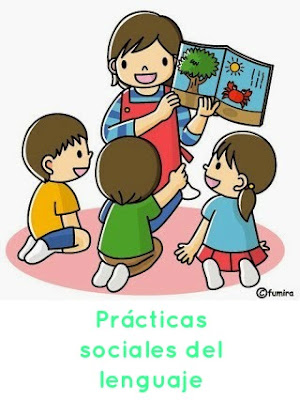Have you ever stopped to think about how we actually learn language? It's a complex process that goes beyond memorizing vocabulary and grammar rules. We learn by using language in different contexts, for different purposes, and with different people. This dynamic approach to language learning is at the heart of what's known as "prácticas del lenguaje" in Spanish, or "language practices" in English.
Imagine a bustling classroom where students aren't just reciting verb conjugations, but are actively engaged in real-world scenarios. They might be collaborating on a project to create a fictional travel blog, complete with photos and descriptions, or perhaps they're role-playing a visit to a local market, practicing their bargaining skills in the target language. These immersive, interactive experiences are key to understanding the power of language practices.
The concept of language practices emphasizes the active and social nature of language learning. It recognizes that language isn't just a set of rules, but a tool for communication, expression, and connection. This approach moves away from traditional rote learning methods and instead embraces activities that allow learners to experience language in meaningful ways.
The history of language practices is intertwined with the evolution of language teaching itself. As educators began to recognize the limitations of grammar-translation methods, which often failed to equip students with practical communication skills, they started exploring alternative approaches that focused on active language use. This shift in perspective led to the development of communicative language teaching (CLT) and task-based language learning (TBLL), both of which heavily influenced the concept of language practices.
The core idea behind language practices is that learners acquire language most effectively when they are actively using it for authentic purposes. Instead of simply memorizing vocabulary lists or grammatical structures, students are encouraged to participate in activities that simulate real-life situations, such as ordering food, giving directions, or having a conversation about their interests. This hands-on approach helps learners develop fluency, accuracy, and confidence in their language abilities.
Advantages and Disadvantages of Language Practices
While language practices offer numerous advantages, it's also important to consider potential challenges:
| Advantages | Disadvantages |
|---|---|
| Increased student engagement and motivation | Requires careful planning and resources |
| Develops fluency and communication skills | Can be challenging to assess accurately |
| Prepares learners for real-world language use | May require teachers to adapt their teaching style |
Best Practices for Implementing Language Practices
Here are five strategies for integrating language practices into the classroom:
- Set clear learning objectives: Define specific communication goals for each activity.
- Create authentic contexts: Design tasks that mirror real-life situations.
- Encourage collaboration: Provide opportunities for learners to interact and practice with each other.
- Provide scaffolding: Offer support and guidance, gradually increasing complexity.
- Incorporate technology: Utilize digital tools and resources to enhance engagement and provide authentic materials.
As our world becomes increasingly interconnected, the ability to communicate effectively in different languages is more valuable than ever. By embracing language practices, we can empower learners to become confident and competent communicators who are ready to engage with the world around them.
Navigating tough choices between a rock and a hard place
Satisfy your cravings your guide to food delivery in cambridge ontario
Conquer wheel fitment mastering the 5x45 bolt pattern
Equipo..3 practicas sociales del lenguaje - Khao Tick On
Organización de las prácticas sociales del lenguaje por ámbitos - Khao Tick On
Hacia una Estrategia de Consumo Sostenible - Khao Tick On
Descubre las 5 prácticas sociales del lenguaje que debes conocer para - Khao Tick On
Presentación prácticas sociales de lenguaje - Khao Tick On
El Poder De La Palabra - Khao Tick On
Que Son Las Buenas Practicas De Manufactura - Khao Tick On
Prácticas Sociales del Lenguaje :: ESTRATEGIAS DIDÁCTICAS CON - Khao Tick On
Prácticas sociales del lenguaje. - Khao Tick On
que son las practicas del lenguaje - Khao Tick On
que son las practicas del lenguaje - Khao Tick On
¿Qué son las buenas prácticas y para qué sirven? - Khao Tick On
Prácticas del lenguaje - Khao Tick On
Prácticas sociales del lenguaje - Khao Tick On
Errores más comunes en la Manipulación de Alimentos - Khao Tick On














